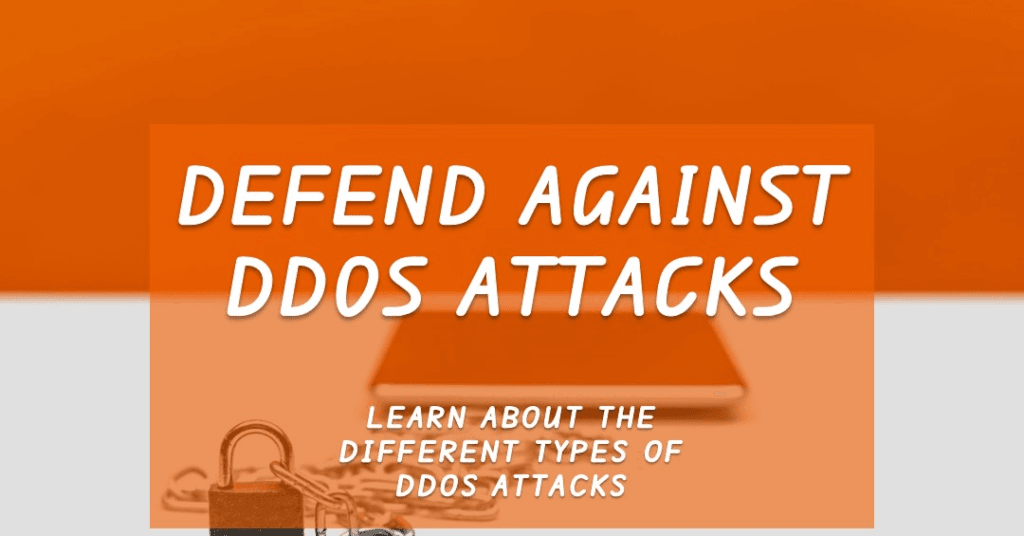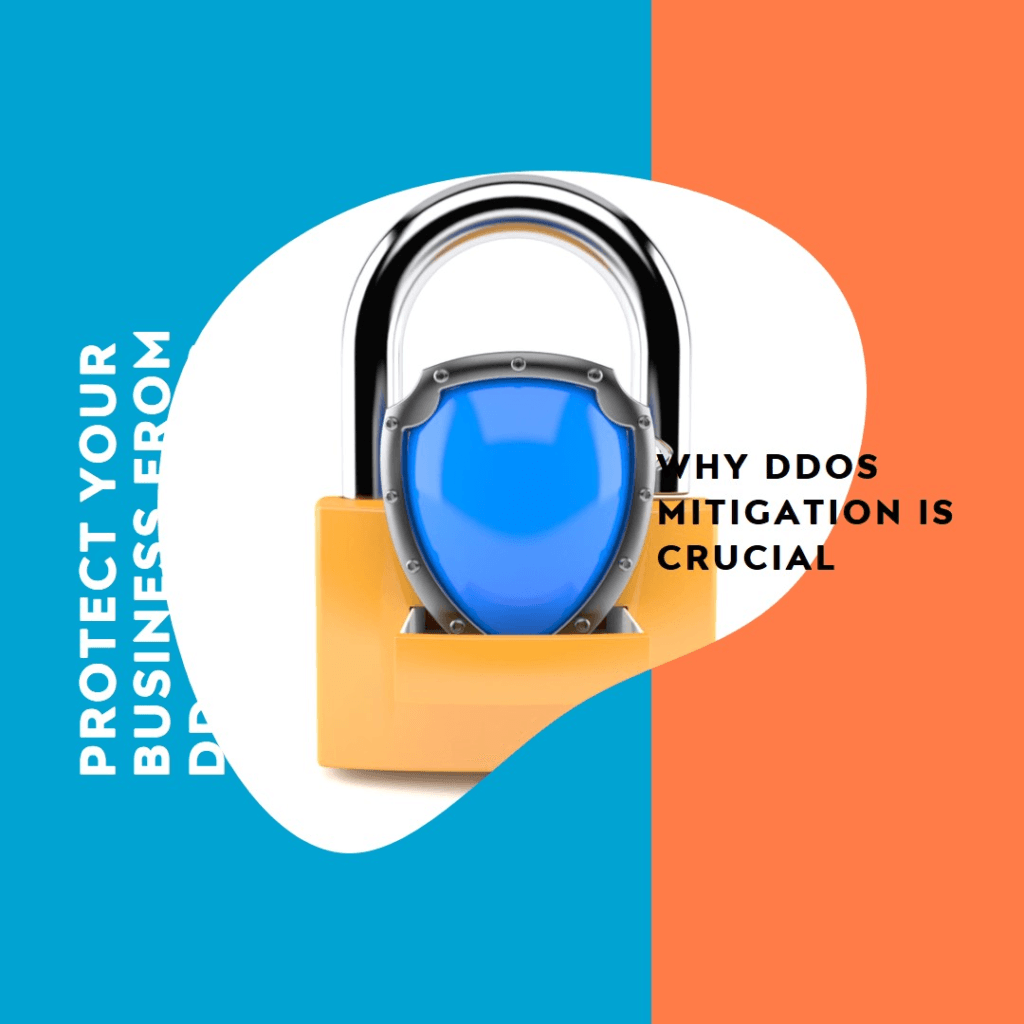In today’s digital world, businesses rely heavily on their online presence. A website or application going down can mean lost revenue, damaged reputation, and frustrated customers. Distributed Denial-of-Service (DDoS Mitigation) attacks pose a significant threat to this online stability. DDoS attacks overwhelm target systems with a flood of junk traffic, making them inaccessible to legitimate users.
Here’s a comprehensive guide to DDoS mitigation, empowering you to safeguard your business from these malicious attacks:
Understanding DDoS Attacks
Imagine a group of attackers coordinating to barrage your website with massive amounts of traffic – like a flash mob trying to crash a store by all entering at once. This coordinated inrush overwhelms your system’s capacity, denying service to genuine users. DDoS attacks come in various forms, targeting different vulnerabilities in your network infrastructure.

Before diving into mitigation techniques, it’s essential to grasp the mechanics of DDoS attacks. These assaults typically fall into three primary categories:
- Volumetric Attacks: Flood the target with a massive volume of traffic, consuming available bandwidth and resources.
- Protocol Attacks: Exploit vulnerabilities in network protocols or services, causing disruption by exhausting server resources.
- Application Layer Attacks: Target specific applications or services, aiming to exhaust server resources or exploit application vulnerabilities.
Building Your Defense Arsenal
Effective DDoS mitigation requires a combination of proactive measures and reactive responses. Here are key components of a robust defense strategy:
- Network Redundancy: Distribute server infrastructure across multiple geographically diverse locations to mitigate the impact of attacks on any single data center.
- Scalable Infrastructure: Design your infrastructure to dynamically scale resources in response to sudden spikes in traffic, leveraging cloud-based solutions for elasticity.
- Traffic Filtering: Employ traffic filtering mechanisms such as firewalls and intrusion prevention systems (IPS) to identify and block malicious traffic before it reaches your servers.
- Rate Limiting: Implement rate limiting policies to cap the volume of incoming requests from individual IP addresses, mitigating the impact of volumetric attacks.
- Anomaly Detection: Deploy anomaly detection systems to monitor network traffic patterns and identify deviations indicative of potential DDoS attacks.
- Content Delivery Networks (CDNs): Utilize CDNs to distribute content closer to end-users and leverage their caching and load balancing capabilities to absorb and mitigate DDoS attacks.
Advanced Mitigation Techniques
In addition to fundamental defensive measures, advanced mitigation techniques can enhance your resilience against sophisticated DDoS attacks:
- Behavioral Analysis: Employ machine learning algorithms to analyze traffic patterns and distinguish between legitimate user traffic and malicious botnets.
- Web Application Firewalls (WAFs): Implement WAFs to inspect and filter HTTP traffic, protecting against application layer attacks by blocking malicious requests.
- CAPTCHA Challenges: Introduce CAPTCHA challenges for suspicious or excessive traffic, requiring users to prove their humanity before accessing resources.
- Anycast Routing: Utilize anycast routing to distribute incoming traffic across multiple geographically dispersed servers, reducing the impact of DDoS attacks by spreading the load.
- DDoS Protection Services: Consider partnering with specialized DDoS protection providers who offer dedicated mitigation solutions and expertise to defend against large-scale attacks.
Proactive Incident Response
Despite proactive measures, DDoS attacks may still occur. Establishing a comprehensive incident response plan is crucial for minimizing downtime and mitigating the impact of attacks:
- Early Detection: Monitor network traffic and system performance metrics in real-time to detect signs of a DDoS attack as early as possible.
- Isolation and Mitigation: Upon detection, swiftly isolate affected systems and implement mitigation measures to minimize service disruption.
- Communication: Maintain transparent communication with stakeholders, including customers and partners, providing updates on the situation and expected resolution times.
- Post-Incident Analysis: Conduct thorough post-incident analysis to identify the root cause of the attack, assess the effectiveness of mitigation measures, and implement necessary improvements.
The Importance of DDoS Mitigation

Being a victim of a DDoS attack can be disastrous. Here’s why mitigation is crucial:
- Business Disruption: Downtime translates to lost sales and productivity.
- Reputational Damage: An unavailable website undermines customer trust.
- Financial Loss: DDoS attacks can incur costs associated with lost revenue and mitigation efforts.
Strategies for DDoS Mitigation

There’s a two-pronged approach to mitigating DDoS attacks:
- DDoS Prevention:
- Reduce Attack Surface: Limit potential entry points for attackers by disabling unused ports and services.
- Web Application Firewalls (WAFs): These filter malicious traffic before it reaches your servers.
- DDoS Protection Services: Cloud-based solutions offer advanced traffic filtering and scrubbing capabilities.
- DDoS Mitigation During an Attack:
- Traffic Filtering: Identify and block suspicious traffic patterns using techniques like blacklisting and rate limiting.
- Content Delivery Networks (CDNs): CDNs distribute your website’s content across a global network, absorbing attack traffic.
- Scalability: Ensure your infrastructure can handle surges in traffic during an attack.
Choosing the Right DDoS Mitigation Solution

The ideal solution depends on your specific needs and budget. Here are some factors to consider:
- Attack Types: Identify the types of DDoS attacks you’re most vulnerable to.
- Scalability: Choose a solution that can handle large traffic spikes.
- Detection and Response Time: Opt for solutions with fast detection and mitigation capabilities.
- Cost: Evaluate the cost of implementing and maintaining a DDoS mitigation strategy.
FAQs
1. What makes DDoS attacks dangerous?
DDoS attacks can disrupt online services, causing financial loss and damaging reputations. They’re dangerous because they can bring down websites and online services, making them inaccessible to users.
2. Can small businesses be targeted by DDoS attacks?
Yes, absolutely. While large corporations may be more common targets, small businesses are not immune. In fact, they may be more vulnerable due to limited resources for cybersecurity measures.
3. How can I tell if my website is under a DDoS attack?
Signs of a DDoS attack include unusually slow website performance, unexplained spikes in traffic, and error messages indicating server overload. Monitoring tools can help detect and mitigate attacks in real-time.
4. Is DDoS mitigation expensive?
Costs vary depending on the size and complexity of your online infrastructure and the level of protection required. However, investing in DDoS mitigation is essential for safeguarding your online presence and protecting against potential losses from downtime and reputational damage.
5. Can DDoS attacks be completely prevented?
While it’s challenging to completely prevent DDoS attacks, implementing robust mitigation strategies can significantly reduce their impact and likelihood of success. By staying vigilant and proactive, you can effectively defend against DDoS threats and keep your online fortress secure.
Conclusion
DDoS attacks are a growing threat, but with proper DDoS mitigation strategies, businesses can ensure their online presence remains secure and resilient. By understanding the different attack vectors, implementing preventive measures, and having a response plan in place, you can effectively shield your business from online chaos and maintain smooth operations.
#epicinfinite #epicarticle #epicblog
Let us know in the comments if you have any questions about DDoS mitigation!










